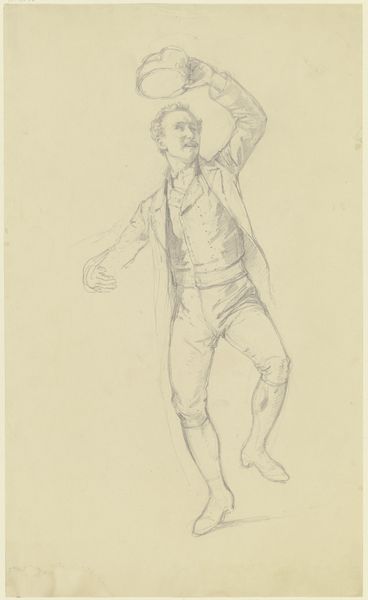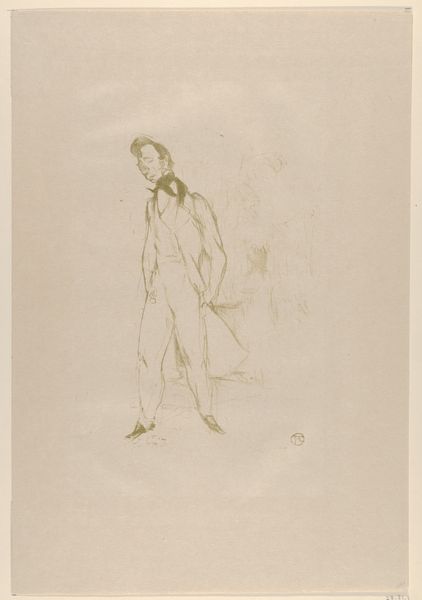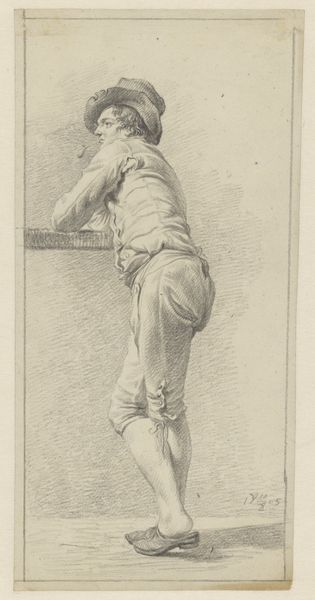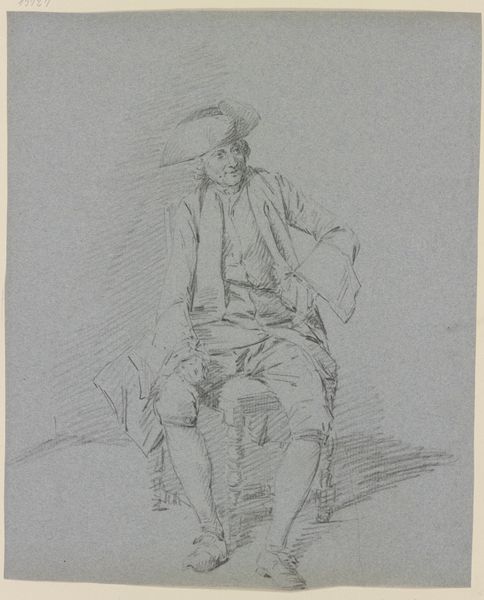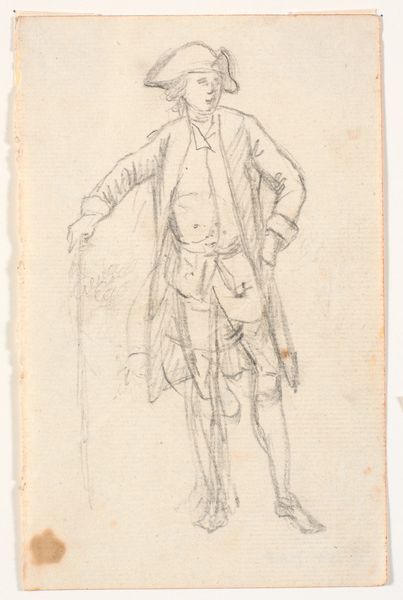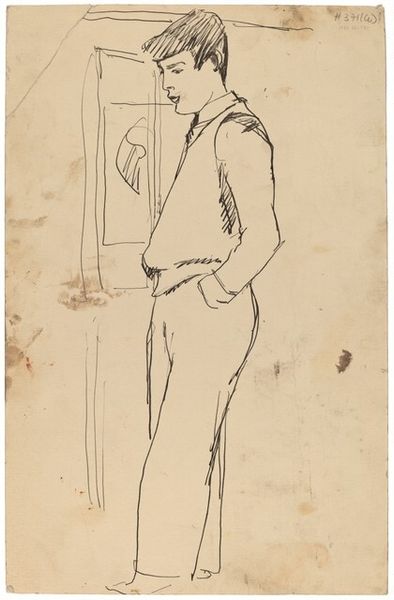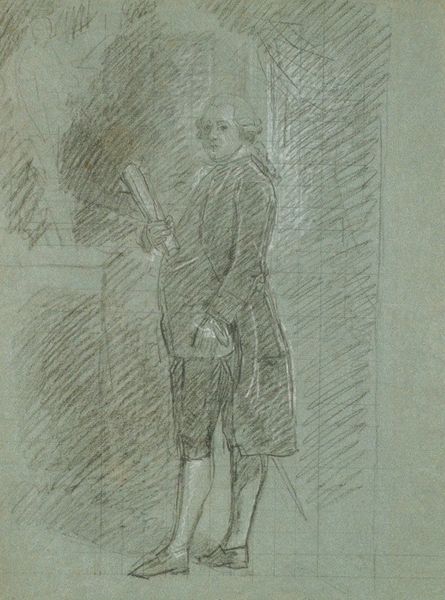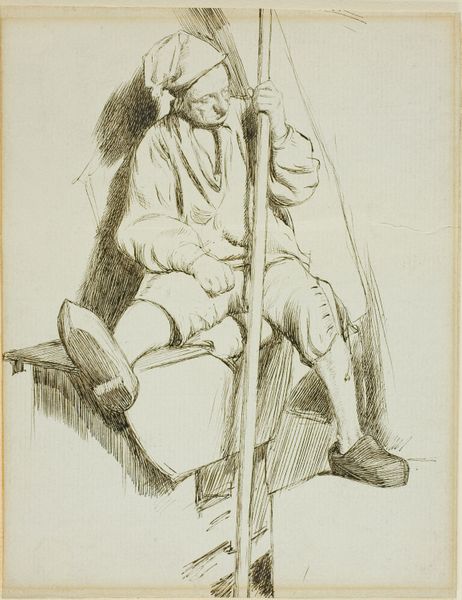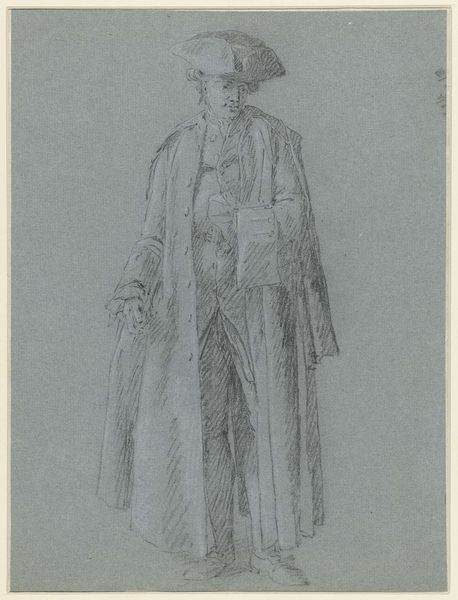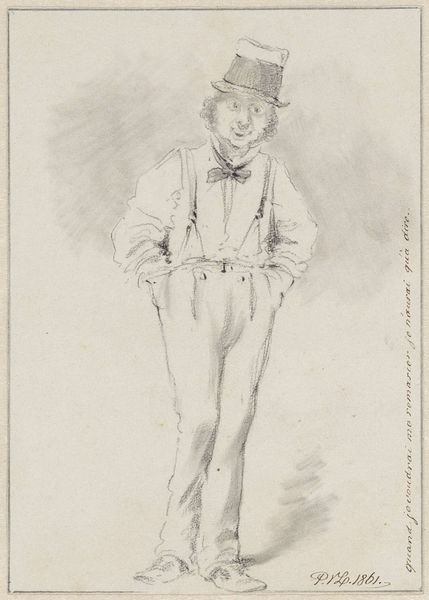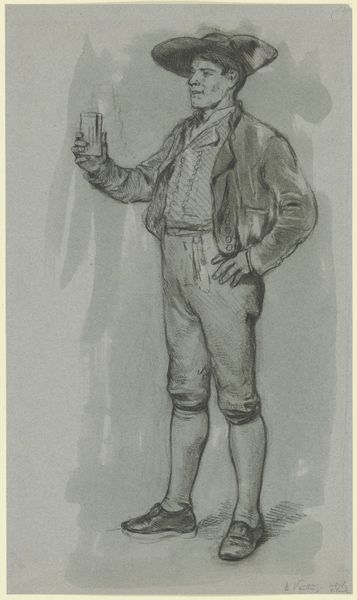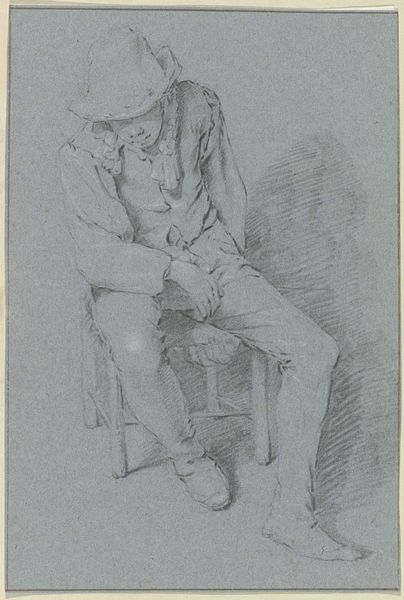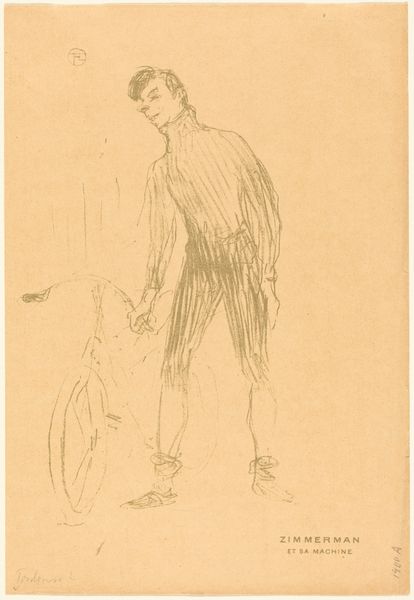
Staande heer met wandelstok, de linkerarm naar voren gestrekt 1735 - 1807
0:00
0:00
hendrikpothoven
Rijksmuseum
Dimensions: height 290 mm, width 224 mm
Copyright: Rijks Museum: Open Domain
Editor: This is Hendrik Pothoven’s "Standing Gentleman with a Cane, Left Arm Extended," created sometime between 1735 and 1807. It's a pencil drawing. The pose feels almost theatrical, like he’s gesturing dramatically in a play. What resonates with you about this sketch? Curator: The extended arm, indeed. It evokes a declamatory pose common in theatre and portraiture of the era, channeling classical rhetoric. But consider also the cane. It is not merely support; it's a signifier of status, of learnedness and leisure, dating back to the scepter. He’s literally grasping at authority, both personal and societal. Do you see that tension reflected in his expression? Editor: I hadn't really thought of the cane as a symbol of authority, but that makes perfect sense! I was more focused on his… well, slightly cartoonish face. Does that exaggerated quality undermine his authority at all? Curator: Perhaps. Or, consider that distortion a commentary. Caricature has always been a method of social critique, subtly poking at the vanity and self-importance of the powerful. Pothoven might be using this familiar visual language to reveal an undercurrent of anxiety beneath the surface of aristocratic bearing. It is an era on the cusp, teetering toward revolution, after all. Editor: That's fascinating! So even a quick sketch like this can reveal so much about the sitter and the time period. Curator: Exactly. Images are never neutral; they are always encoded with layers of meaning, inviting us to decipher them and engage with the cultural memory they embody. Editor: I will never look at a simple portrait the same way again. Thanks for enlightening me! Curator: The pleasure was all mine. May we continue to be inquisitive, and to read the symbolism within!
Comments
No comments
Be the first to comment and join the conversation on the ultimate creative platform.
